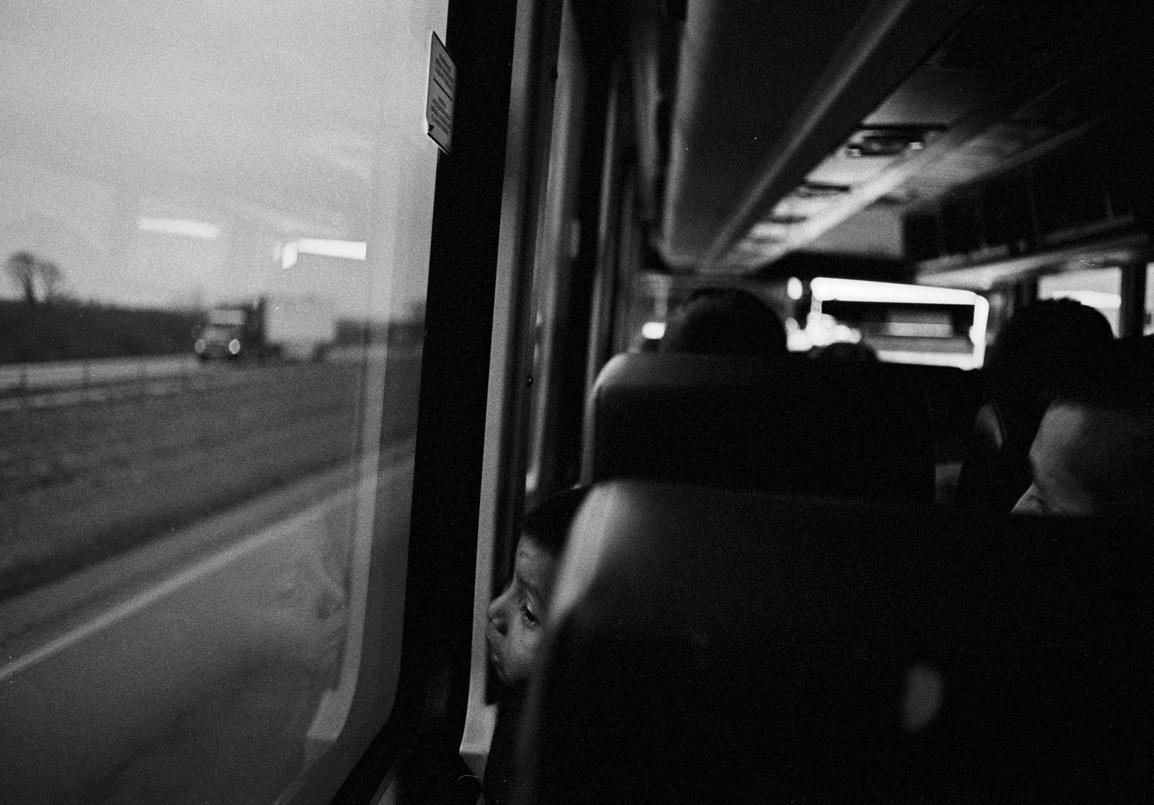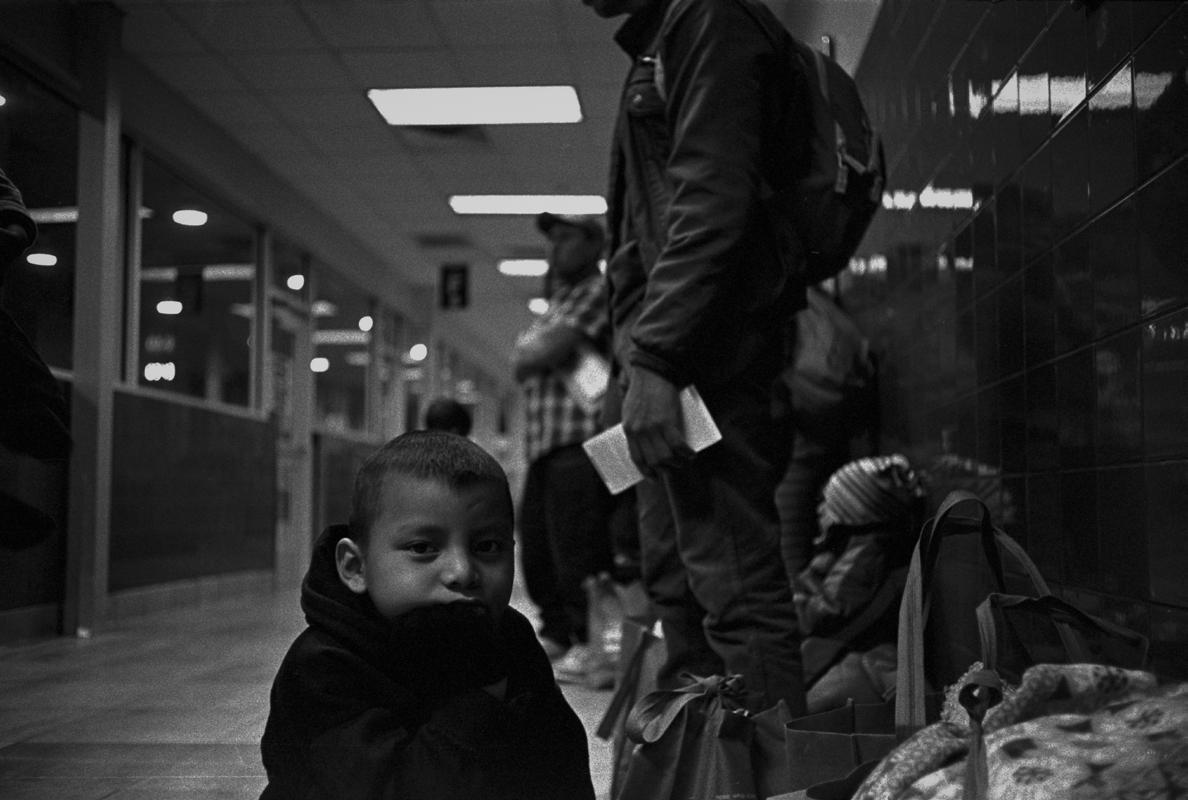April 2023

Issue IV
The Yale Journal of Politics and Culture



April 2023

Issue IV
The Yale Journal of Politics and Culture


Three Decades after the Kidnapping of the Panchen Lama
Editors-in-Chief
Rachel Shin
Kyra McCreery
Print Managing Editors
Kate Reynolds
Vanika Mahesh
Associate Editors
Andrew Alam-Nist
Owen Haywood
Cat King
Grey Battle
Alexia Dochnal
Hannah Kotler
Isabella Sendas
Kaj Litch
Lauren Kim
Natalie Miller
Phoenix Boggs
Rebecca Wasserman
Samantha Moon
Sarah Jacobs
Tanisha Narine
Theo Sotoodehnia
Molly Weiner
Tiffany Pham
Adam McPhail
John Lewis Gaddis
Online Managing Editors
Leonie Wisowaty Honor Callanan
Publisher
Abby Nickerson
Interviews Directors
Cat King
Hannah Kotler
Creative Director
Grace Randall
Design & Layout
Malik Figaro
Manav Singh
Annie Yan
Technology Director
Alex Schapiro
The Politic Presents Director
Caleb Lee
Business Team
Owen Haywood
Communications Team
Christopher Gumina
Catalina Mahe
Isabella Panico
Andrew Alam-Nist
Robert A. Lovett Professor of Military and Naval History, Yale University
Ian Shapiro
Henry R. Luce Director of the MacMillan Center for International and Area Studies at Yale
Mike Pearson
Features Editor, Toledo Blade
Gideon Rose
Former Editor-in-Chief of Foreign Affairs
John Stoehr
Editor and Publisher, The Editorial Board
*This magazine is published by Yale College students, and Yale University is not responsible for its contents. The opinions expressed by the contributors to The Politic do not necessarily reflect those of its staff or advertisers.

NO
Mold. Asbestos. Broken piping. Holes in the walls. Plaster falling from leaky ceilings. These are just a handful of the conditions that residents in New York City’s public housing are currently facing. The New York City Housing Authority (NYCHA) serves over 564,301 residents, and for many of these residents, public housing is their only affordable option. They are forced to live in rapidly deteriorating conditions that have been repeatedly ignored by management. NYCHA’s recent attempts to fix the situation have only worsened the crisis: privatization plans, supposedly made with good intentions, are now threatening the end of public housing in New York City.
Ramona Ferreyra, a community advocate for tenants’ rights, has spent many years living in New York Public Housing, moving in and out of her grandmother’s apartment since childhood. In the early 2000s and prior, conditions were much better, she noted. “While the Housing Authority had a lot of corruption, service was quicker, there were more staff, and the management worked directly with the tenants,” Ferreyra said.
After graduating from highschool and leaving public housing, Ferreyra earned multiple degrees and went on to work for the federal government before she eventually re-
turned to New York City. Over those years, she witnessed a steady decline in living standards that her grandmother, who lived in a Bronx development, was facing. Ferreyra would have to do repairs on the apartment herself because no one would respond when they submitted a request.
“It breaks my heart because the tenants that are usually the most vulnerable, like seniors, those that don’t speak English, and the disabled, tend to have the worst living conditions,” Ferreyra said.
It is no secret that New York public housing has been declining in recent years. NYCHA itself reports that it has been going through its worst financial crisis in history. There is simply not enough money being pumped into its upkeep and development. In order to acquire new funds, NYCHA has begun privatizing New York City’s developments – a move that has been met by much anger by activists, who believe that privatization will only harm the tenants, and that the true answer is fixing the institutional problems causing the crisis in the first place, such as the federal divestment from public housing and NYCHA mismanagement.
Incredibly slow rental times are a product of this mismanagement. Ferreyra explained that when people leave housing or pass away, the units are emptied, “and it’s tak-
en 260 days minimum to flip a unit – this is in a climate where you have housing insecurity and you have homelessness at an all time high in New York City.”
NYCHA began its turn towards privatization in 2012 with the implementation of two programs: the federal Rental Assistance Demonstration (RAD) and New York City’s version, the Permanent Affordability Commitment Together (PACT). Previously, public housing developments were established and funded under Section 9 of the United States Housing Act, which ensured residents only had to pay 30% of their income as rent. RAD and PACT converted a portion of NYC developments to Section 8, which authorized rental housing vouchers for residents to use to pay private landlords.
The switch was designed to access private funding that Section 9 housing is barred from using, and it was supposed to resolve the desperate lack of funds. However, there has been little improvement in these converted developments; tenants are now more vulnerable than ever.
NYCHA released information documenting that nearly half of the apartments converted before February 2020 saw significant increases in evictions. They also revealed that under Section 8, families pay 40% of their

income towards rent, a substantial increase from the 30% maximum under Section 9 public housing.
According to Vernell Robin, founder of the activist group Neighbors Helping Neighbors, “a lot of people are being displaced, their families are being dismantled, people are going to shelters, and families are just being destroyed. It’s not only a physical disparagement, but it’s mental and physical as well as spiritual.”
A 2022 Human Rights Watch report found that PACT has caused a decrease in government oversight, loss of tenant protection, and the removal of any resources to address issues. The report goes on to show that these issues may leave residents vulnerable to other rights violations such as increased evictions. These violations have already started to occur in various residences. Brenda Temple, a member of activist group The Committee for Independent Action, observed that Oceanside, a residence that was converted to a Section 8 building by PACT in 2019, has not seen any improvement. In fact, things have worsened. “We see through surveys and through personal experiences that the rents are going up, that people are being evicted left and right, that the repairs are substandard, and that almost half of the residents are dissatisfied with the way management is run,” Temple said.
With RAD and PACT being unsuccessful, NYCHA proposed their latest grand solution in July of 2020: the Blueprint for Change. The Blueprint, despite being funded by a public trust – the NYC Public Housing Trust – is ultimately a very similar plan to RAD and PACT. Under the Blueprint, housing will still be converted to Section 8.
In 2016, after moving back into public housing to care for and spend time with her grandmother, Ferreyra became incensed by privatization plans that were putting residents’ safety and futures on the line. In the following years, she joined several campaigns aiming to improve conditions in public housing residences. From 2018 to 2019, she worked to improve waste management systems, supplying new garbage cans for public housing buildings. In 2019, she campaigned for old and unsafe elevators to be replaced — elevators that have been promised but still have not been implemented. Ferreyra also joined movements beyond the public housing sphere, fighting for equitable transportation and justice for incarcerated people, but still, she wanted to do more.
In April of 2021, Ferreyra founded Save Section 9, an organization devoted to fighting NYCHA’s shift away from Section 9 public housing. Ferreyra explained, “we’re not one group, we’re a coalition. We invite all groups to the table, and we develop tools and resourc-
es that all of the groups can use.” Save Section 9 focuses on lobbying and teaching tenants about what is happening with NYCHA.
When it comes to lobbying, Save Section 9 differs from other tenant focus groups because they target the federal players: Congress, the Department of Housing and Urban Development (HUD), and federal politicians. They do this because privatization is not a New York City specific issue but a nationwide policy trend implemented by the federal government that has affected many communities for the last several decades.
The first major instance of privatization occurred in the 1990s, when the Cabrini-Green public housing stock in Chicago was torn down. Though tenants were promised they’d be allowed to return, Cabrini-Green was re-
Helping Neighbors, and the Justice for All Coalition is educating tenants.
According to Ferreyra, Save Section 9 focuses on telling stories – explaining the story of public housing and its legislation and policy in order to make it more accessible for tenants. This work is important because the future of New York City public housing developments is, at least in part, up to the tenants themselves.
Although initially, housing developments were converted to PACT without a vote, now residents get to vote on whether to convert their development to PACT, convert to the Blueprint for Change, or remain with Section 9. However, only 20% of the development needs to vote in order for the vote to be considered valid. With such low voter turnout required, this major change can occur even if most tenants are unaware of the implications that come with each option.
Temple described the process by which NYCHA poses the vote to residents: “What NYCHA will do is come to your development, and they will show a PowerPoint presentation about the three options. They do not elaborate on Section 9, because they don’t want to.” After 100 days, the vote commences and whichever option receives the most votes wins.
Tenants deserve the chance to fully understand what RAD and PACT, the Blueprint, and staying Section 9 might mean for them, and the work of these organizations ensures that they get this chance.
placed with mixed income housing unaffordable to most of the original tenants. Since then, various privatization plans have gone into effect elsewhere like Cambridge, Minneapolis, and Los Angeles. Now, it is New York City’s turn.
Kristen Hackett, researcher and member of Save Section 9 and the Justice for All Coalition, explained that the disrepair in New York City started getting worse in 2008. At this time, she said, “there were a slew of tenant-led lawsuits and the Feds got involved. But what started to happen in that process was that the Feds started to alleviate Congress of responsibility and started to blame NYCHA and focus on mismanagement. Mismanagement is an issue, but the root of the issue is really federal disinvestment.”
According to Human Rights Watch, between 2000 and 2021 the budget of the U.S. Department of Housing and Urban Development has decreased by 35%, adjusted for inflation. The government is turning away from public housing when they need to revitalize it.
With public housing being attacked on all sides, one of the most important efforts of organizations like Save Section 9, Neighbors
NYCHA and government officials believe that the public housing system is unsaveable – that the only way to get the necessary money is to privatize. But privatization is not the answer and protecting tenants must be prioritized. So, a major change in the system and in public housing policy is necessary.
In Hackett’s view, public housing isn’t a perfect system. However, “it’s the only form of housing that currently exists that provides stable, deeply affordable long term housing, especially for extremely low income households. Can you imagine a world without public housing? That’s a major homelessness crisis waiting to happen.”
For Ferreyra and many others, public housing policy is deeply personal. Growing up, Ferreyra did not have to worry about housing insecurity; she could go to college, and then on to grad school, with the knowledge that she had a supportive network back home to rely on. In Ferreyra’s words, “I would not be who I am – I would not have achieved the things that I’ve achieved, had it not been for public housing.”
“Can you imagine a world without public housing? That’s a major homelessness crisis waiting to happen.”

“I would not be who I am – I would not have achieved the things that I’ve achieved, had it not been for public housing.”
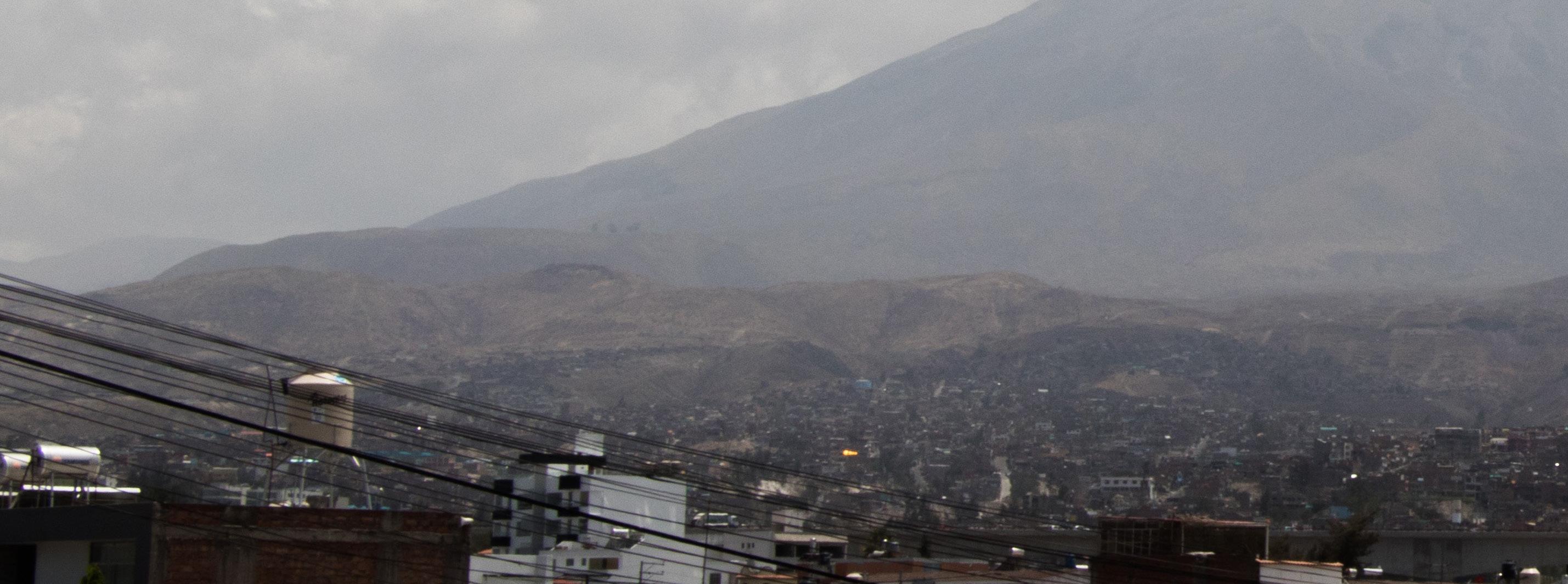 BY OSCAR HELLER
BY OSCAR HELLER
“Wehave been getting killed from the very beginning,” Clara Mongé said, reflecting on contemporary Peru from her Delray home. She left her native country decades ago, but her walls still display a colorful blend of Spanish and Peruvian decorations, including an enlarged Tumi head, antique Spanish chairs, Catholic prayer candles whose plastic coverings show images of an eerily European Jesus, rosaries, holy water, and beautiful Spanish figure paintings. Her pantry contains Peruvian classics like chicha morada, inca cola, leftover milanesa, and pisco.
Born in 1944, Mongé is a living history. She is part of a fading generation of Peruvians who witnessed the country’s revolutionary attempt at relieving the symptoms of colonialism in the latter half of the twentieth century. Despite unprecedented policy reforms, Peru has not yet completely healed from its troubled past and remnants of colonization continue to seep into every aspect of Peruvian life. “The legacy of colonialism exists everywhere…Everything we have been doing has just been a response to colonialism,” Mongé said. As a country whose history is inextricably woven into the fabric of Spanish subjugation, Peru’s contemporary issues—namely, rural-led protests—should be viewed through a lens that reckons with the inauguration of Span-
ish rule and the nearly 500 years of exploitation that followed.
PERU’S INTERNATIONAL STRIFE is rooted in colonial power relations and remains an integral part of the country’s political identity. “Ever since colonization,” Mongé said, “it has been very difficult to maintain the peace between native Peruvians and the Spanish.” Fluent in both the indigenous language of Peru— Quechua—and the language of the colonizer—Spanish—Mongé understands this divide personally; it has affected every aspect of her life, imposing language standards and mystifying her own relationship to native Peruvian culture.
Juan Velasco Alvarado, who served as Peru’s president from 1968 to 1975, sought to erase the strict boundary between the groups. His administration is perhaps best remembered for its striking defiance of the West’s influence. Alvarado reclaimed some of Peru’s oil fields, which limited American access to the coast and to the country’s thriving fishing industry. He famously said, “let them send the Marines as they did in Santo Domingo. We will defend ourselves with rocks if necessary.” And at home, he ignited a wave of agrarian reforms that, according to the FRD of the Library of Congress, sought to transfer ownership of agrarian land to rural laborers.
Alvarado’s deprivatization policy significantly altered Peru’s land politics. In response to 16th century reforms that facilitated the Spaniards’ control over native lands and paved the path for an agricultural oligarchy, the president attempted to usurp the neocolonial throne that separated the urban elites and the agrarians. Despite the transfer of ownership, social divides persist. Manuel Figallo, the son of Clara Mongé, explained this limitation of Alvarado’s policy, saying “the coastal elites—people from Lima, where I was born—would feel more comfortable [talking to] a Spaniard than an Andean peasant.”
But Alvarado did not resign to pessimism. He intended to heal the wound of colonialism by dismantling the glaringly unequal distribution of wealth and thus the ghost of Spanish colonialism. According to Figallo, he “gave people in the Andes a taste of democracy, and they wanted more.”
DR. ANNA KANT, a Latin American historian at the London School of Economics, agrees. “Land reform,” she said, “was about much more than just a distribution of assets. It was an intensely political and cultural process in which new forms of politics emerged.” In her book Land Without Masters, however, Cant explains the policies’ controversial role in Peruvian history as people attempt to control their narrative. Many conservatives, for example, have framed the reforms as an economic disaster that devastated the agricultural sector. Other commentators hold the view that their unequal implementation between rural areas in addition to Alvarado’s declining health prevented the reforms from reaching their full potential.
This group of scholars argue that the agrarian reforms partially curbed support for Maoist insurgents who helped inaugurate years of internal violence—a group called the Shining Path. Others maintain that the reforms were isolated to specific regions. As a result, there was an unequal distribution of benefits, leading some Peruvians to the Shining Path. Despite the heavily contentious scholarship, one thing is clear: the development of the Shining Path alongside a period of economic stagnation (the “Lost Decade”) had a disastrous effect on the agrarian reforms’ place in Peruvian political consciousness.

“Velasco Alvarado talked

about making politics more than just the interests of Lima elites,” Cant said. The reforms heavily affected rural areas that endured unrelenting abuse from the government through over-policing and “a wider silencing of historical narratives that celebrated reform as a moment of peasant empowerment,” as Cant wrote. This, coupled with the decrease of redistribution under President Bermúdez in the 1970s and the privatization of rural land under President Fujimori in the 1990s, halted the progress of agrarian Peru.
PEDRO CASTILLO, ELECTED as the Peruvian president in 2021, initially offered a promising alternative. His beginnings were quite modest. He was raised in the town of Puña, one of Peru’s most economically distraught areas, as the son of two farmers—his father a recipient of the benefits of Alvarado’s reforms. An elementary school teacher and union leader, Castillo ran on a populist platform with the slogan “no more poor people in a rich country,” sporting a signature white hat and comically large pencil on the campaign trail. He embodied a spirit of political possibility as someone who not only sympathized with rural poverty, but lived through and endured it. The Guardian dubbed him the “Son of the soil,” and rightfully so. He represented something rural Peruvians have longed for since the days of Al-
varado: a serious, legitimate place in the state.
“There’s…a hunger for a government that would take seriously the demands of rural communities,” Cant said. Figallo echoed the desire “to be a part of a democratic system.”
However, after waves of corruption charges, an unusually unstable cabinet, and multiple impeachment attempts, Castillo’s presidency was wracked with internal conflicts that undercut his campaign promises. Things escalated when, just before the third impeachment attempt, Castillo announced his intention to suspend Congress and rule by decree, a move that resulted in his swift removal. Figallo described the frustration of the continuous struggle: “When he failed, a lot of rural Peruvians felt like they had been cheated out of true democ-
racy once again.”
SINCE THE INTRODUCTION of the Spanish colonizers, Peru has been grappling with an intersectional division between indigenous rural workers and the urban elites. When met with serial policy failure, this gap manifests as intractable social unrest. Mongé described a fundamental lack of trust between the government and native Peruvians. After all, it wasn’t until 1979 that illiterate Peruvians were granted suffrage, and even that was followed by the emergence of the Shining Path, waves of violence that hit rural areas hardest, and a crackdown on indigenous communities. Figallo recalled a personal story about the devastating effects of this violence: “Tío Pepe’s nephew was kidnapped by the Peruvian military police when they were cracking down…They drove him to the outskirts of Lima, wrapped him in dynamite, and blew him up.”

Castillo is only the latest in a long line of historical injustices that have eroded rural
and other impoverished Peruvians’ faith in the nation’s institutions. The advances made in the mid-twentieth century under Alvarado were short-lived. Peru’s death rate during the COVID-19 pandemic was the highest in the world, and the country’s healthcare system lacks basic medical supplies. Food insecurity plagues the population, and Castillo’s administration crumbled before Peruvians less than a year after he took office.
Dina Boluarte was sworn into the president’s office following Castillo’s imprisonment as his supporters ignited protests. The unrest quickly transformed into a larger movement against the marginalization of rural Peruvians. Since then, she has called the demonstrations a form of “terrorism,” as if the Peruvian police were not throwing tear gas and firing military-grade guns at unarmed protesters. Though this reaction from a high-ranking government official might seem insignificant, the word “terrorism” carries a particular weight in Peru and its usage signifies a devastating misunderstanding of the protests. As
traces its roots to Peru’s internal conflict in the ’80s and ’90s, in which many rural Peruvians were accused of being members of the Shining Path. Since then, the word has adopted racial undertones and often refers to the “radical leftism” emerging from indigenous communities in rural areas, which delegitimizes activists and obfuscates their demands.

“IT’S HISTORY REPEATING itself,” said Figallo from his home in Washington, D.C. as he sat on his living room couch. “There’s tension between the people in the Andes and the coastal elites, and it’s a result of race, history, socioeconomic classes, the haves and the have-notes.”
Interestingly, Boluarte—like Castillo—was born in rural Peru. She understands what it is like to be constantly ignored and exploited by elitist politicians. So, the surge of protests should not be surprising.
Rural and impoverished Peruvians have been dealing with governmental hypocrisy for centuries, and the widespread distrust of institutions is an inevitable consequence of exclusion from the collective political sphere. As the approval rating of Peru’s Congress continues to plummet and protests envelop the country, the question of what to do next grows more pressing. Some have called for a complete overhaul of Peru’s constitution,
guaranteed protection over the right to protest, the removal of Boluarte, and new elections.
The next steps seem frighteningly uncertain in the context of the unprecedented scope and scale of the protests. But, amidst this internal strife, there is at least one bright spot: this could arguably become Peru’s best chance at remedying its deep colonial wounds and bridging the gap between the elites and the agrarians.
As Mongé said as she sipped her chicha morada at lunch with her niece, “In spite of divisions, the inhabitants of Peru have always been strong.”
BOUNDED BY THE MASSIVE MOJAVE AND SONORAN DESERTS, the Colorado River is known as the Lifeline of the Southwest. Winding from Colorado to Utah, through Arizona, and along the borders of Nevada and California, it encompasses 1,450 miles of flowing water. Traversing through labyrinths of deep sandstone canyons
unique to the American Southwest, the river comprises a drainage basin of 246,000 square miles across the states of Wyoming, Colorado, Utah, New Mexico, Nevada, Arizona, and California. Yet in the face of historic drought and climate change, the mighty Colorado River is drying up.
On January 31st, the seven western states that utilize the Colorado River as a source of water failed to reach an agreement regarding how they would share the burden of cutting 2-4 million acre-feet of water usage
per year. California is the lone holdout on agreement. As the original deadline was June 2022, this is the region’s second failed attempt to collectively reduce its water usage. It now seems likely that the federal government will have to intervene and impose its own cuts on individual states. Currently, California and Arizona are at risk to lose the most water. Yet given Arizona’s status as a junior rights holder to the Colorado River, as opposed to California’s senior status, it is likely that the Grand Canyon State will have to
bear the brunt of this burden.
“California has more senior water rights than Arizona. Arizona has this large canal, the Central Arizona Project, which runs 300 miles from the Colorado River all the way down past Tucson,” said Kristen Wolfe, coordinator for Arizona’s Sustainable Water Network, a coalition of 30 advocacy groups including the Sierra Club and local audubon societies.
The Central Arizona Project is how Phoenix receives its share of the Colorado River water. When the canal was built with the federal government’s money in the 1980s, Arizona agreed to junior water rights. While California could agree to more cuts, it doesn’t possess a legal obligation to do so.
Encompassing Phoenix, the fastest-growing metropolitan area in the country, as well as numerous rural areas that have already experienced well-depletion, Arizona faces tough decisions moving forward. The state receives 2.8 million acre-feet of water per year from the Colorado River and currently stands to lose 20% of that access. One acrefoot, which is equivalent to 326,000 gallons, is sufficient to supply water to three families per year. Last year, the state was forced to cut 512,000 acre-feet from the Central Arizona Project and is looking at similar cuts this year, on top of the 2-4 million acre-feet that the seven states must collectively give up. While these cuts shouldn’t affect citizens’ access to water, future ones could lead to water shortages in metropolitan areas if the Colorado River continues to dry up. High-density populations coupled with booming agriculture industries in the desert region will spur these water
shortages.
“For most of the century, there was more than enough water feeding into the Colorado River system to meet all needs and allocations. The usage gradually grew through the 20th century,” Bob Henson, a meteorologist from Colorado and writer for Yale Climate Connections said. “By the end of the century, usage had pretty much caught up to availability.”
Between 2000 and 2020, the flow of the Colorado River averaged 13.4 million acre-feet per year, while consumption averaged 15 million acre-feet per year. Combined with the ongoing drought, the Colorado River has lost 33.6 million acre-feet of its total volume. There are also concerns amongst environmentalists and meteorologists that 2023, an unusually wet year for the West, will distract people from the long-term issue at hand. Between October of 2022 and January of 2023, Flagstaff received two feet of snow above average; in Phoenix, the city received 1.23 inches of rain in January—the ten-year average for the month is around 0.75 inches. This past year of heavy rainfall and snow is not indicative of future wet years to come. Rather, it is an anomaly that may buy the region some time but is unlikely to repeat itself. In fact, rainfall has not changed much within recent decades. Seasons are just becoming more extreme; wet years are getting more rain and dry years are getting even less rain than usual. Up until this past season, Arizona was in the midst of a dry spell that was exacerbated by rising temperatures. “What’s happening is that there are higher temperatures, which are absolutely related to climate
change. That’s drying the landscape out, and the impacts of megadrought have been worsened by climate change,” Henson said. Media coverage of water shortages doesn’t often highlight the struggles that rural communities face to obtain water. Currently, residents of cities like Phoenix and its suburbs are only asked to voluntarily reduce their water use, but nobody in these metropolitan areas deals with water rations. Meanwhile, some rural areas have already seen total well depletion due to droughts, and indigenous communities have dealt with water insecurity for decades.
“Water helps us clean things. When the pandemic hit, the people in the Navajo nation suffered greatly because there’s no running water up on Navajo tribal lands. We saw very clearly what happens when you don’t have water,” State Representative Stephanie Stahl Hamilton said.
As of 2021, 40% of Navajo households didn’t possess running water and had to travel several hours to outside areas to obtain water. With limited water reserves, Navajo families sometimes must choose between safe drinking water and frequent hand washing to prevent the spread of viruses. This meant that during the pandemic, the Navajo were at greater risk of exposure to COVID-19. With more intense droughts plaguing the Colorado River, Navajo people face heightened water insecurity and its consequences.
“I’ve read stories of neighbors fighting each other over water,” Auston Collings ’26, an environmental studies major from Tucson, said. “Rural communities, specifically indigenous communities, in Arizona have a very long history of water problems and ineq-
“Water helps us clean things. When the pandemic hit, the people in the Navajo nation suffered greatly because there’s no running water up on Navajo tribal lands. We saw very clearly what happens when you don’t have water.”
uity.” While the average American household uses 88 gallons of water per day, indigenous families only use three to four.
As it stands, Arizona is currently receiving about 40% of its water from the Colorado River. When it comes time to cut 20% of that amount, Arizona will have to reduce its total water usage by about 8%.
Given the economic benefits of a booming population—between 2010 and 2023, the state’s population has grown by over 15 %, jumping from 6.4 million to 7.4 million inhabitants—Arizona is reluctant to impose water restrictions on households, as these may disincentivize people from moving to the state.
Still, something will have to change, and it will likely be the agricultural industry. Farming uses upwards of 70% of Arizona’s Colorado River allocations. This may lead to the decline of some specific agricultural industries. For instance, the Yuma area in Southwest Arizona is a critical exporter of leafy greens across the nation. Other crops, such as alfalfa, are water-intensive plants used to support both the local and national cattle industry, but could easily be grown elsewhere in states not dealing with water shortages.
“Farmers need to do more of what they have been doing in trying to save water, and they have a very good history of imple-
menting water efficient irrigation and adapting crops and the timing of their planting to reduce water use,” Susanna Eden, research program officer at the University of Arizona’s Water Resources Research Center, said. “As urban dwellers and citizens of the state, we may need to subsidize that ability for farmers, especially as so many farmers are working lands that they don’t own and don’t have the financial incentive or even ability to adopt conservation measures that require expensive infrastructure.”
Moreover, the agricultural industry’s water usage extends beyond the Colorado River. Farmers also have a complicated history with groundwater, and its depletion has another set of ramifications. Groundwater provides base flow to rivers, so when its supply is diminished, rivers go dry, a phenomenon already being witnessed in areas around San Pedro, Santa Cruz, and Tucson.
“They’re trying now to do more groundwater pumping, to supplement. [The agriculture industry] agreed back in 2007 to take less priority cap water as they try to find new sources, and they didn’t move on it,” Wolfe said. “So now they’re trying to supplement with groundwater, and groundwater is another whole different animal here in Arizona in terms of depletion.”
The problems of the Colorado River
cuts and the issues revolving around the agricultural industry beg the question: what is the Arizona legislature doing to conserve water? By and large, the answer is nothing.
“In 1980, our groundwater management act passed. It was groundbreaking in many respects; it finally regulated groundwater in our most populous areas. And that was fantastic. It really did set us on a course of sustainability for our most populous areas at the time,” State Senator Priya Sundareshan said. “But now, it’s been over 40 years, and the state has grown. And we’ve grown into those more rural areas. Those areas were left unprotected back in 1980. That’s the problem. That’s one of the major problems that we need to be fixing, that we still haven’t been able to.”
Water is a highly politicized issue in Arizona, where Republicans currently control both branches of the state legislature and Democrat Katie Hobbs acts as governor. While a lot of legislation gets proposed, most bills never move forward. For example, during the past five years, Arizona Democrats have been trying to pass a watershed health bill, but it has yet to receive a hearing. Many politicians act in favor of the cattle and ranching lobbies and don’t want to see legislation pass that creates change for those industries.
“The unfortunate part is, there’s a little appetite for change,” Hamilton said.
“The unfortunate part is, there’s a little appetite for change. It’s not only highly politicized, but it has fallen on partisan lines. It didn’t matter what bills we submitted to address the effects of climate change, to take care of greenhouse gas emissions. Those bills never got heard in committee.
The decisions are still being made by agriculture and their own industry.”
“It’s not only highly politicized, but it has fallen on partisan lines. It didn’t matter what bills we submitted to address the effects of climate change, to take care of greenhouse gas emissions. Those bills never got heard in committee. The decisions are still being made by agriculture and their own industry.”
Arizona might be able to successfully manage its water supply through conservation efforts, such as building solar panels over crops to prevent evaporation, capturing rainwater, and curtailing industries that misuse water. These preemptive measures proposed by Democrats would not harm the environment, nor would they take water from new sources.
Yet, in spite of these proposals, there are still politicians throughout the state floating impractical ideas such as desalination plants or piping water across the country from the Mississippi River—which has also been experiencing low water levels—if water insecurity becomes too severe. Under former Republican Governor Doug Ducey and the Water Infrastructure Finance Authority, Arizona allocated $1 billion dollars in 2022 to investigate these potential out-of-state water sources.
“A lot of money is earmarked for finding how we can import water from somewhere else. There’s talk of shipping water from
Mississippi out here to the West, which from an environmental aspect is beyond ridiculous,” Wolfe said. “So when the Mississippi floods there should be a giant pipe that could suck that water across half the continent and alleviate water issues here in the West. Everybody calls that a real pipe dream.”
Republican legislators have also suggested building desalination plants on the Gulf of California, where salt water would be purified into fresh water and then pumped to the Phoenix area. This would involve hundreds of miles of piping, five to ten years of labor, and billions of dollars.
“It’s very interesting and quite frustrating that the state allocated a billion dollars to look into importing water from outside of the state and only 200 million for conservation,” Wolfe said. “So that alone tells a story. The legislature seems to be banking on finding water elsewhere versus making serious cuts within the state.”
Legislators often act without the interests of the most deeply affected communities in mind. Extending back to the Groundwater Management Act in the 1980s, the legislation was chiefly designed by farmers and developers, while environmentalists and indigenous people were largely kept out of the conversation. With the state’s decades-long
precedent of inaction and exclusion of critical groups from influencing new laws, it’s become clear that the people of Arizona must act to create change. As voters actually begin to feel the effects of climate change and water insecurity more intensely in the coming years, environmentalism will become a bigger issue for campaigns.
“Water security has been a rising issue, especially in 2022. I worked on political campaigns, and I felt that when I talked to voters, when I went door knocking for political candidates, a lot of times water came up as a very big issue,” Collings said. “As water starts to become more and more scarce, it’ll become more of an issue for voters. And hopefully, candidates will make it a more central focus of their campaigns.”
“It’s very interesting and quite frustrating that the state allocated a billion dollars to look into importing water from outside of the state and only 200 million for conservation. So that alone tells a story.
The legislature seems to be banking on finding water elsewhere versus making serious cuts within the state.”
Three Decades after the Kidnapping of the Panchen Lama

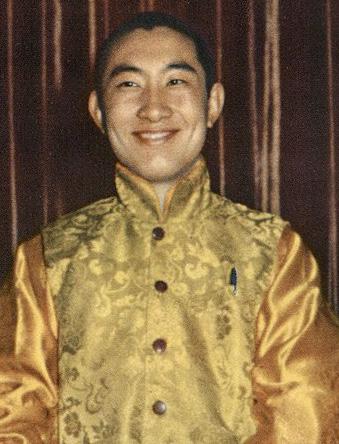
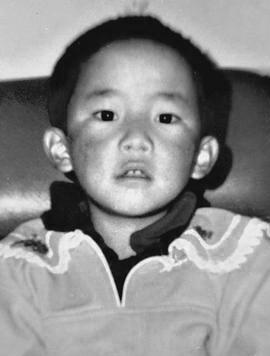 BY ADNAN BSEISU
BY ADNAN BSEISU
ON AN OTHERWISE sedate afternoon in May 1995, residents of a remote village in Lhari, Northern Tibet, watched in stunned silence as armed men stormed into one of the town’s homes, snatched a family of herders, and fled as quickly as they had come. This was no ordinary abduction. The kidnappers’ target was a six-year-old boy who held the key to Tibetan Buddhism’s future––Gedhun Choekyi Nyima.
Murmurs of Nyima’s abduction spread quickly, first to the capital city of Lhasa, and then to the world beyond. The boy, who became the world’s youngest political prisoner, has not been seen nor heard from since.
Just three days before his kidnapping, it became abundantly clear––perhaps to everyone except Nyima––that the boy’s life was about to take a dramatic turn. On that day, the 14th Dalai Lama, Tenzin Gyatso, recognized Nyima as the 11th reincarnation of the Panchen Lama, the second highest spiritual authority in Tibetan Buddhism. Following the announcement, monks at the Tashi Lhunpo Monastery, the monastic seat of the Panchen Lama, began eagerly preparing for the imminent arrival of their new lama––decorating his chamber, readying their youth, containing their excitement.
At this holy site, the boy would have spent the remaining years of his childhood learning Buddhist philosophy and Tibetan language, history, and culture. Each day, he would have risen early for traditional rituals and meditation. He would have spent his evenings practicing for a lifetime of
performing religious ceremonies. Occasionally, his daily routine might have been interrupted by a phone call with his exiled spiritual mentor, the Dalai Lama. They would have had many conversations over the years, in which the man whose magnetic charisma had earned him global stardom would mentor the boy.
Memories of his childhood home in Lhari would have grown distant as Nyima would grow into his role as the second highest spiritual authority in the land.
It is hard to fathom how this curated life of rigorous education and spirituality would have molded the boy. It is even harder to speculate on how his teachings would have shaped the lives of others. But Nyima never made it to Tashi Lhunpo.
Nyima’s kidnapping was the boiling point of a highly politicized six-year search for the 11th Panchen Lama, which itself was a manifestation of a long and complex history between China and Tibet.
The Mongol invasion of Tibet in 1240 marked the first time China imposed direct control over the region. The secular Mongol Emperor granted Tibetan religious leaders limited political autonomy in exchange for religious legitimacy in what has become known as the patron-priest relationship. The Qing dynasty (1636–1912) was the last to uphold this relationship with the Dalai Lama––by then the leading Tibetan Buddhist authority––by granting him a role as the Qing emperor’s spiritual mentor. But when the protectorate declared its independence in 1913, following the fall of the Empire during the Chinese Revolution,
China refused to recognize the move. Tibet remained a de facto independent state until 1950, when it was annexed by Mao Zedong’s People’s Liberation Army. One year later, the People’s Republic of China and Tibetan negotiators, under duress, signed the Seventeen Point Agreement, retroactively legitimizing China’s “liberation” of Tibet from imperialism while promising to safeguard the Tibetan religio-political system. The international community has come to recognize the Seventeen Point Agreement as a ‘marriage certificate’ of a tumultuous modern union.
However, it was not long before Tibetans took to the streets to file for divorce. A series of uprisings broke out over the next decade, most acutely in 1959, when rumors swirled that China was planning to kidnap the 14th Dalai Lama and take him to Beijing. The Dalai Lama subsequently fled to Northern India. Dharamsala, a serene intermontane city known for its lush greenery and unassuming charm, has housed the Tibetan-government-in-exile, and its nationalistic struggle, ever since.
But the 10th Panchen Lama, the man who preceded Nyima, stayed in Tibet. For the first time since the early 19th century, a generation of Tibetans––in Tibet and in exile––would grow up without simultaneous access to both of their highest spiritual leaders as result of tight Tibetan border controls. Initially, large swaths of Tibetans traveled to India in hopes of glimpsing the Dalai Lama, but this number faltered in ensuing decades as China imposed harsher controls. Last year, a handful of people
“Mao Zedong whispered in His Holiness’ and it still remains a poison in the eyes government.”
undertook the daring journey.
The 14th Dalai Lama and the 10th Panchen Lama––traditionally spiritual mentors to one another, each solely responsible for recognizing the other’s reincarnation––would never see each other again. In 1989, the 10th Panchen Lama’s passing ignited a highly-anticipated war of claims over who would have the final say over his successor.
For centuries, the Tibetan people entrusted their religious leaders with unilateral control over the search process for reincarnated lamas. But since the 1950 Chinese takeover, China has claimed responsibility. The country’s ultimate goal in taking over the selection process was to further establish itself as an authority in the minds of the Tibetan people and to select a lama who would be open to Chinese influence.
China set out to select a Panchen Lama under the auspices of abiding by Tibetan Buddhist tradition, in which high lamas use clues from the previous lama’s death to search for children born with special signs around the same time. It often takes years to nominate children as candidate tulkus––masters of Buddhism––who are then tested to see which of them is the true reincarnation of the previous lama.
The current Dalai Lama was identified as a tulku at the age of two and enthroned two years later after correctly identifying the 13th Dalai Lama’s personal belongings.
But when China formed a search committee of tulkus in 1989, following the death of the 10th Panchen Lama, it broke
centuries of tradition by dispossessing the exiled Dalai Lama of the right to ultimately recognize the reincarnation. Instead, it mandated the use of the Golden Urn, a centuries-old artifact with newfound relevance as the rationale for China’s purview over Tibetan Buddhist affairs.
The Qianlong Emperor gifted the urn, a copper pot, to Tibet in 1792. The Emperor ordered Tibetan monks to confirm their reincarnations by drawing candidate names out of the pot, and it has since been used to identify four Dalai Lamas. Interestingly, the urn has been accepted––albeit to varying degrees––by Tibetan Buddhist leaders over the years as a viable tiebreaker between contentious candidates.
In an effort to hoodwink China, the head of the search committee, Chadrel Rinpoche, secretly approached the Dalai Lama at the end of the search process with a candidate he believed was the Panchen Lama’s true reincarnation. The Dalai Lama agreed and privately recognized Nyima as the 11th Panchen Lama. Rinpoche then set out for Beijing to steer the committee towards Nyima and dupe the Chinese Communist Party (CCP) into believing the boy was its selection. But while Rinpoche was in Beijing, the Dalai Lama went public with news of a new Panchen Lama.
Chinese officials immediately arrested Rinpoche and the rest of the search committee. Three days later, Nyima became the youngest political prisoner in the world.
Tenzin Lekshay is the official spokesperson for the Central Tibet Administration (CTA), the government-in-exile.
Lekshay was wary of the time difference between Dharamsala and the East Coast and insisted on an email interview because a call would be “too late” for me. After reassuring him that I am often up to see the sun rise, he agreed to a 25-minute discussion at midnight about the CTA’s official position on the Panchen Lama. As he answered my first question, it became immediately clear that Lekshay’s unbounded passion for the issue would overshadow his concern for my sleep schedule––typically, Buddhist monks wake up at around 4 am. We decided to table our discussion just before 2 am.
Lekshay said that Nyima’s kidnapping is a universal matter of injustice not only because the young child’s family was indefinitely imprisoned without cause, but also because it deprived all Tibetans of a historically deep-seated thought leader. He continued that the entirety of humanity would have borrowed wisdom from the Panchen Lama, just as it has from the Dalai Lama.
Lekshay noted that the crime is symbolic of the systemic Chinese campaign to foist its political motivations on Tibetan Buddhists. He warned against being fooled by seemingly progressive Chinese interventions in Tibet, like refurbishing traditional monasteries. These, he insisted, are always made in service of an ulterior motive, like promoting tourism in the region.
“Right from the beginning, [China] had a problem in understanding Buddhism,” Lekshay said. “Mao Zedong whispered in His Holiness’ ears that ‘religion is opium’… and it still remains a poison
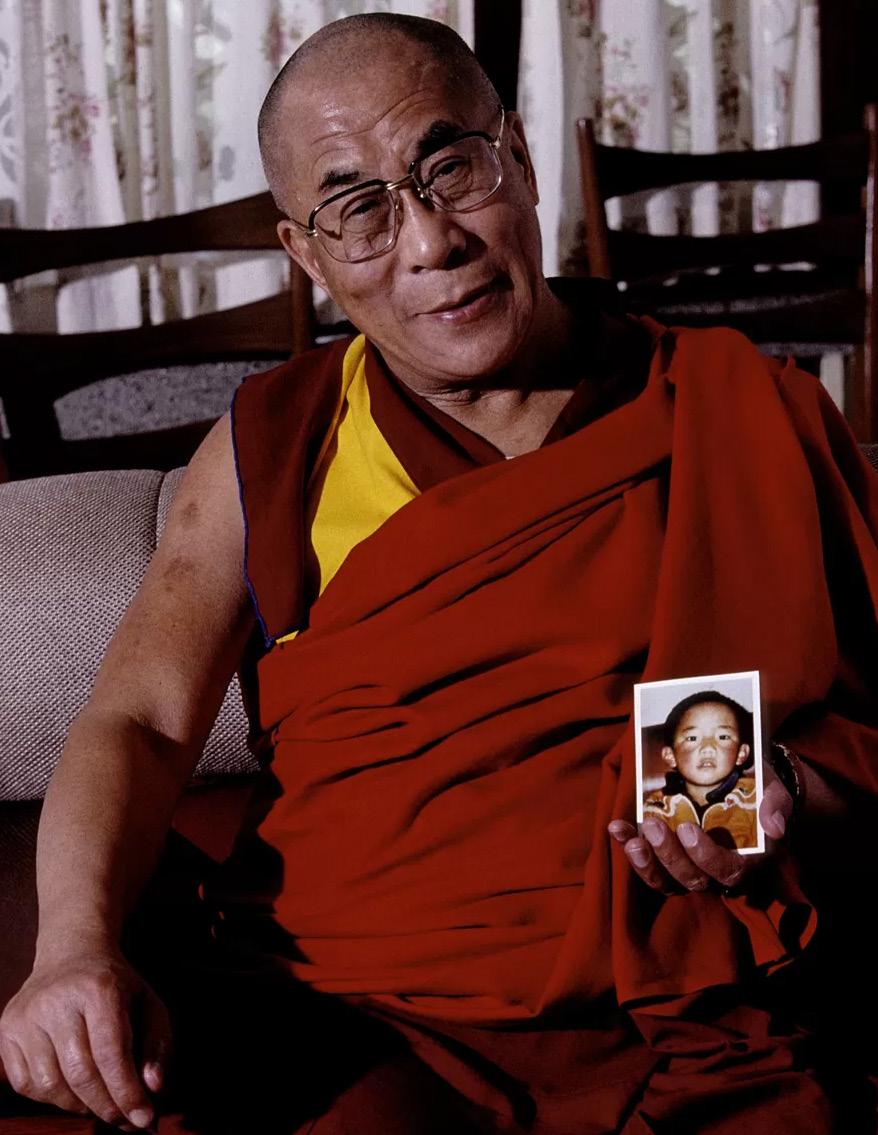
in the eyes and in the mind of the Chinese government.”
Lekshay said that to abduct six-yearold Nyima is a breach of humanitarian law, which prohibits taking civilians hostage; meanwhile, to kidnap the Panchen Lama is a garrote around the neck of Tibetan Buddhists, who have turned to the high lama for moral and spiritual guidance for centuries. To add insult to injury, China suspended its diplomatic back channels with the CTA in 2010 and has since refused to provide evidence of Nyima’s wellbeing.
Lekshay stressed that the issue of the Panchen Lama’s kidnapping concerns the international community as well. Were it to turn its back on Nyima by failing to secure his release, it would be shunning the pillars of justice and universal rights that have governed world order for decades.
Despite China’s hostility, the Tibetan government-in-exile harbors sympathy for the country. Lekshay regretted that China is headed in “the wrong direction.” It would even be unfair to blame the Chinese lay person for his views on Tibet, Lekshay said. Such a person is just as cut off from information as a Tibetan.
“China has to wake up,” Lekshay said. “China has to change for the better––for the future. And there is a right path for China to lead [the world] in the future.”
Lekshay outlined the government-in-exile’s “middle way policy” on the Sino-Tibetan conflict, which derives from the Middle Path in Buddhism, a balanced approach to life that avoids extreme world views. Under this policy, China and Tibet would enjoy a harmonious relationship in which China would retain political and economic control over Tibet while allowing for “meaningful [Tibetan] autonomy”––the freedom to practice Tibetan Buddhism and preserve Tibetan Buddhist culture without interference or religious persecution.
Lekshay prays for the moral realignment and future prosperity of China. His government’s desired outcome is not an independent Tibetan state. Rather, it is a home for the Tibetan people where the Panchen Lama can be chosen and raised freely in a monastery and the Dalai Lama can return from exile to impart wisdom onto Tibetan Buddhists without fear.
“If you are supporting Tibet,” Lekshay said, “you are pro-justice. And justice is universal.”
While it is easy to view Nyima’s kidnapping as a categorical human rights violation and move on, such resignation ignores the intellectual rigor the issue demands.
Enter Robert Barnett, founder and former Director of the Modern Tibetan Studies Program at Columbia University and co-founder and former Director of the Tibet Information Network, a leading source of independent news on Tibet. No one has been more consequential in the study of modern Tibet than Barnett. His role in translating and publishing the most important document in modern Tibetan history is evidence of that fact. The 70,000 Character Petition was a critical report on the CCP’s Tibet policy authored by the 10th Panchen Lama in 1962. In 1964, Mao imprisoned the Panchen Lama for the report, which had been sent to his government behind closed doors, denouncing it as a “poisoned arrow shot at the party.” For decades, scholars entertained rumors about the document, but none outside the halls of the Chinese government had seen it. And yet, in 1996, the 70,000 Character Petition was anonymously hand-delivered to the office of a single scholar: Robbie Barnett.
I met Barnett to discuss the Panchen Lama at a deli in a London suburb. He immediately set the tone for our nearly 3-hour conversation. “You have to know China,” he told me. “You have to know Communism, you have to know Marxism, and you have to know Xi Jinping to make any reasonable statement about what they’re doing [in Tibet].”
I pushed back, citing human rights
“If you are supporting Tibet, you are pro-justice. And justice is universal.”
reports on Tibet that outlined abuses so grave that political ideology seemed irrelevant.
“Imagine the Chinese perception,” Barnett urged. “Then that human rights abuse no longer becomes an automatically meaningful self-serving unit of knowledge.”
Instead, Barnett prefers to analyze Tibet through a colonialist framework. He said it allows him to assess territorial disputes, track longer-term trends in China’s Tibet policy, and grapple with nuanced issues that “the human rights realm” and “abhorrent parachutist journalists” ––journalists who write bitesize stories about Tibet with limited knowledge of its history––are incapable of addressing.
According to Barnett, Tibet is a microcosm of China’s communist grand strategy. He stressed that the pace of change in Tibet will reflect the CCP’s progress toward its stated goal: true communism. As China is officially in the primary stage of socialism, the CCP seeks to increase proletariat consciousness, an effort it believes will render Tibetans grateful to China. In the interim, China’s policies aim to wean Tibetan Buddhists off their religious practices, preparing them for the next stage of Chinese communism in which they are totally sinicized.
On the issue of the 11th Panchen Lama’s kidnapping, Barnett urged me to consider the CCP stance on why replacing the Panchen Lama (rather than abolishing the lama system altogether) makes sense.
“‘We know that backward religious peoples who are not advanced only understand their own leaders, who have to have at least the appearance of the same culture as them,’” Barnett said, imitating the CCP. “‘Then we need a figurehead––we need a lama.’”
Barnett revealed to me that for the first three years of the Panchen Lama
search process, China allowed the search committee to conduct a traditional search, even permitting Chadrel Rinpoche to be in contact with the Dalai Lama throughout. Their only intervention was requiring that the Chinese state eventually recognize the reincarnation. Barnett’s private interviews with those involved in the process at the time led him to believe that in 1993, the Chinese and the Dalai Lama were close to a deal that would allow both to recognize the same candidate.
But by 1994, the leadership of the CCP’s arm overseeing Tibet, newly appointed in the years following Tiananmen Square, changed its policy.
“The deal with Chadrel Rinpoche: canceled. The generosity, the kind of cloaked tolerance of the Dalai Lama: canceled. He’s now the enemy. Everyone has to denounce him. The deal on the next Panchen Lama: canceled,” Barnett said.
Barnett concluded that China’s policy shift was a political miscalculation. It violated the “gradualist” approach to educating the proletariat prescribed by Marx. He attributed the blunder to China’s benighted leadership in Tibet, a group of hardline CCP officials mostly parachuted in from Beijing with little expertise on the region.
By November 1995, China faced its most acute legitimacy crisis yet in Tibet. It had cornered itself into having to anoint its own Panchen Lama and could not capitulate by recognizing the Dalai Lama’s pick. Running out of options, China selected six-year-old Gyaltsen Norbu by way of a Golden Urn lottery, which photographic evidence suggests was rigged. Further distancing the CCP from Tibetan Buddhist tradition, the CCP opted to raise its Panchen Lama in the worldly streets of Beijing, not the gardens of Tashi Lhunpo, where the monks refused to house him.
“So now they’ve got to find a tutor
for this new Panchen Lama to make him look traditional,” Barnett said of China’s dilemma. “[China needs to] produce a convincing Panchen Lama that won’t run away. They haven’t really succeeded.”
Barnett said that the CCP-recognized Panchen Lama is little more than a political figure in Tibet. His religious credibility among Tibetans, who still display pictures of the 10th Panchen Lama in their homes, is nonexistent.
China will certainly name a reincarnation of the current Dalai Lama––now 87 years old––when he dies. However, after the episode of the 11th Panchen Lama, the prospect of religious Tibetans being grateful to the communists is slimmer than ever. Barnett worries that the CCP has lost too much credibility among Tibetans to legitimately participate in a search process again.
For those skeptical about the CCP’s right to participate at all, Barnett notes that China adroitly oversaw the search process for the 17th Karmapa, another Buddhist master, in 1992. The Karmapa became the first living Buddha to be recognized by the atheist Chinese Communists. He was simultaneously recognized by the Dalai Lama. In 1999, the Karmapa defected to join the Dalai Lama in exile.
Some may take issue with the abstract notions Barnett deploys to scrutinize the very real issues affecting Tibetans, but the intellectual vantage point is not trivial. When I asked him what I should take away from our conversation, he was quick to answer: study China. “It doesn’t mean that Tibet isn’t important,” he said. “It just means you can’t understand Tibet without China.”
But to John Powers, a lecturer in Buddhism Studies at the University of Melbourne and a practicing Buddhist, the issues are too real to abstract. Powers, who studied under the Dalai Lama’s interpreter Jeffrey Hopkins at the University of Virgin-
ia and even attended the Dalai Lama’s 70th birthday celebration in Delhi, said China’s oversight of reincarnation is always illegitimate.
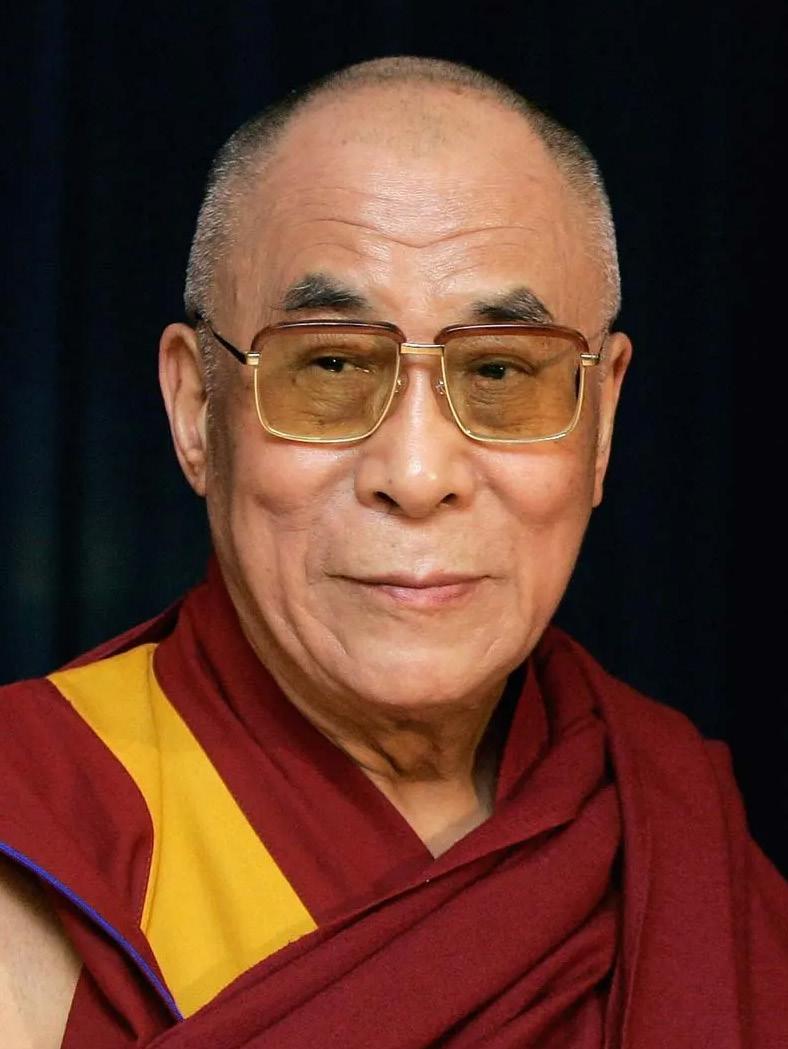
“Because the Chinese Communists are dialectical materialists, they don’t believe in reincarnation or the possibility of the transfer of subconsciousness from one life to the next,” Powers explained. “This means that they can’t say we have identified the transmigrating consciousness of the past Panchen Lama or, in the future, the Dalai Lama, because they don’t believe this is even possible.”
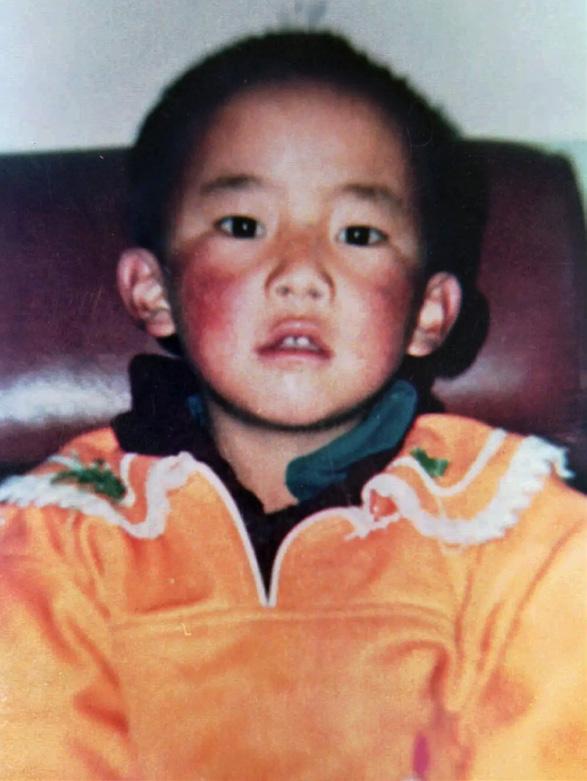
Lekshay expressed similar sentiments. He wondered ironically why the Chinese have yet to look for Mao Zedong’s reincarnation, given their avowed interest in the cycle of rebirth.
“For Tibetan Buddhists, it’s not the title that’s important,” Powers continued. “It’s that this person is believed to have the consciousness of the first Panchen Lama, and the second, and third, and so forth. It’s to be part of this lineage of transmigrating lamas who have been great teachers and meditators.”
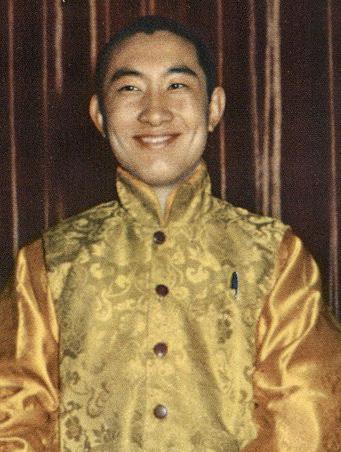

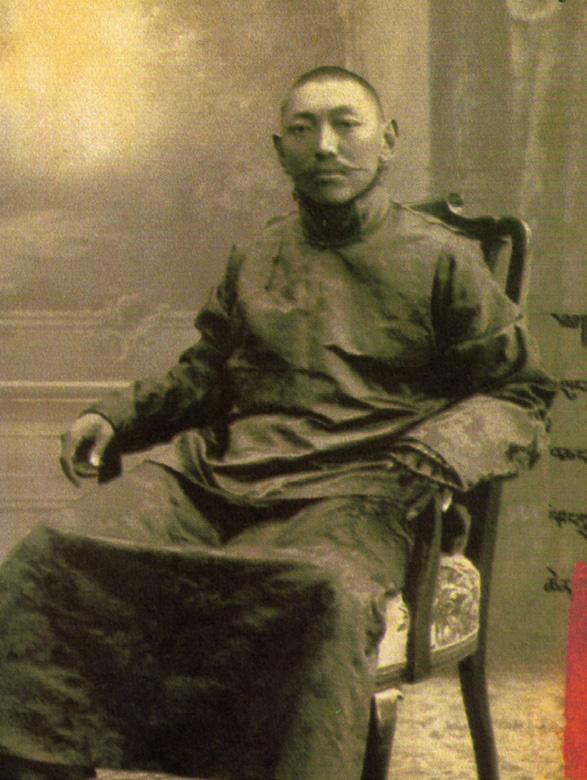

Powers joked that China might as well have named a pick for U.S. postmaster. It has the same level of jurisdiction over both roles, he said.
But, of course, China has not annexed the U.S. Postal Service. Nor does it have the tangible authority to dismantle regional post offices that defy it. Nor do postal employees rely on China for their economic prosperity. The Dalai Lama is said to be contemplating prohibiting a search for his reincarnation, effectively eradicating the Dalai Lama lineage. It is hard to imagine this as anything other than a response to China.
THE MIDDLE PATH MAY inform the fairest way to think about Tibet. As with most issues, the pursuit of a universally virtuous


stance too heavily dilutes the complexities of the delicate historical relationship at hand. The communist brush that paints Tibet as a primordial Chinese province has frayed. The Tibetan people command a culture necessarily molded by their faith; the Chinese communists decry faith. The region is geographically anomalous: the socalled “Roof of the World,” Tibet houses the world’s tallest peaks, including Mount Everest. The Tibetan people speak their own language and comprise a singular ethnic group found nowhere else in the predominantly Han mainland China.
But painting China as a capricious human rights abuser pays little attention to detail. The politburo’s rigorous political calculations serve a long-term pursuit of Marxism. Each decision on Tibet is an essential deliberation for the CCP, capable of setting back or moving forward its political timeline by several years.
Not to mention, the Tibetan Buddhist faith is more resilient than most give it credit for. An end to the Panchen Lama lineage––and that of the Dalai Lama, for that matter––would upend centuries of tradition, but it would not threaten the religion’s survival. Thousands of lamas would remain, and some would naturally evolve to replace the religious stature of the lost lama.
More concerning is the difficulty of pursuing the Middle Path given the lack of academic discourse on the issue. The scholars I spoke with were remarkably eager to offer their time. All of them bemoaned the unfortunate reality that the situation in Tibet remains among the most undertaught issues at universities in the Western world.
In 2018, Yale’s only professor of Buddhist traditions, Andrew Quintman, departed the University because of a dispute over tenure, leaving Yale devoid of courses on Tibet.
Quintman, currently doing research in Nepal, will be bringing his findings back to Wesleyan University. Students at Yale––and those at many other universities across the country––are unable to access experts like Quintman to supplement an interest in Tibet.
Increased scholarship on Tibet would promote a larger set of founded opinions to subscribe to. More discussion about the issue would follow; more of us would run into each other as we navigated the halls of history in search of a way out. Perhaps this would move us closer to the intellectual equipoise for which Barnett advocates.
In New Haven, Tibetan immigrant Sherab Gyaltsen runs a Tibetan restaurant with his wife. Tibetan Kitchen boasts a cozy dining area adorned with colorful cloth wall decorations and framed clips of glowing New York Times reviews. Tibetan singing bowls line the shelves and a portrait of
the 14th Dalai Lama as a young man hangs high above diners.
Gyaltsen, who was born in Dharamsala and describes himself as mildly religious, views the further study of Tibet as nonnegotiable; it is the most viable path to a resolution of the Sino-Tibetan conflict. For him, a resolution would mean the fulfillment of a lifelong dream: taking his daughter to Tibet. In the meantime, Gyaltsen resorts to annual trips to India to immerse his daughter in the exiled community.
“I want [my daughter] to learn her own language,” he said of his rationale for the trips. “Language is culture. If she just spoke English, I couldn’t expect her to think like a Tibetan
This fall, Gyaltsen’s daughter is headed to Stanford University. For now, there is no going back to Tibet.
“I want [my daughter] to learn her own language. Language is culture. If she just spoke English, I couldn’t expect her to think like a Tibetan.”
“MISSISSIPPI NEEDS A barnstorming govenor who can drink RC colas and eat Moon Pies,” Representative Bennie Thompson (D-MS), the only Democrat in Mississippi’s congressional delegation, said. Brandon Presley––the presumptive Democratic nominee in the 2023 Mississippi Gubernatorial election––fits the bill. With his folksy charm, Elvis connection, and north-Mississippi accent, Presley has a natural charisma that puts voters and reporters at ease.
Presley, a Mississippi Public Service Commissioner and former small-town mayor, sets up a test case for Democrats across the South. For years, Southern liberals have argued that one-party Republican rule has led to inefficient and corrupt governance that gives Democrats an opening to run as the party of clean government and economic development.
If there ever was a time and place for this theory, it would be 2023 in Mississippi. The Democratic candidate, Presley, channels a rare combination of populism and cultural competence. He stands to benefit from a unique confluence of political and economic issues, including a massive welfare corruption scandal, Republican leadership’s refusal to expand Medicaid, and Mississippi’s continued underperformance in indicators of social and economic well-being. The confidence among Democrats is palpable.
“Brandon Presley not only has a chance — I think he’ll win,” said former Senator Doug Jones (D-Alabama) of the Democratic nominee’s prospects.
Representative Bennie Thompson (D-MS 2nd), the dean of Mississippi Democratic politics, echoed his sentiment. “I think this will be one of those campaigns for the books,” Thompson said.
Presley’s pitch is simple: Mississippi

has been mismanaged, and the state deserves better.
Polling data is also promising. In polls of the race, Reeves, the incumbent, stands in the low-to-mid 40s, and the governor has an approval rating below fifty percent––not a position of strength for an incumbent.
Even when the political climate appears to be stacked in their favor, Democrats run against strong headwinds in Mississippi. Factors that would seem to prime the state for an opposition victory are all present. But the further one dives into the race, the murkier things become. Those skeptical of Presley’s chances concede that he is likely the last, best hope of Mississippi’s once-dominant Democratic Party, and those bullish on Presley acknowledge he is still the underdog.
Ray Mikell, a political science professor at Jackson State University, sums Presley’s greatest challenge succinctly: “some people would vote for Satan with an R by his name.”
The last time Mississippi voted for a Democrat for governor was 1999. Only one Democrat, former Attorney General Jim Hood, has won statewide office since 2003. No Democratic presidential nominee has won more than 44% of the vote in Mississippi since 1980.
Mississippi Democrats have been burned before. Democrats’ much-vaunted recruit in the 2019 gubernatorial election, former 4-term Attorney General Hood, was also a popular politician from a small, North Mississippi town. Like Presley, Hood polled well at the beginning of his race for governor. In the end, though, he lost to then-Lieutenant Governor Tate Reeves by over five points––closer than any Mississippi gubernatorial election in nearly twenty years, but still not all that close to victory.
While there are many similarities between Hood and Presley’s campaigns, Hood had much higher statewide name recognition.
“Jim Hood actually had well established statewide name ID,” said Frank Corder, editor of the Magnolia Tribune. “He’d run five campaigns statewide, whereas Presley has never run a statewide campaign. So Presley’s name ID is basically
nil outside of his northern district area.”
While Presley’s low name ID is a risk, Democrats hope his charisma and life story could make it harder to lump him in with the national party. Presley is widely accepted to be more charismatic than Hood.
“Presley is probably a better onthe-stump candidate and re-
tail-politician than Hood was,” Corder said while comparing the two politicians’ campaigning abilities. “Hood was a little more stoic,” he continued.
Presley’s opponent, Governor Tate Reeves, has a playbook for defeating a promising Mississippi Democrat: attack on spending and taxes and lump the Dem-
“Once
ocrat in with unpopular national figures. He’s already done it successfully once in 2019.
If Governor Tate Reeves’ 2023 State of the State Speech was any preview of his message on the campaign trail this fall, he intends to lean heavily on cultural issues this time around. “We have a duty to keep pushing back against those that are taking advantage of children and using them to advance their sick and twisted ideologies,” he said in the address. “We must take every step to preserve the innocence of our children, especially against the cruel forces of modern progressivism which seek to use them as guinea pigs in their sick social experiments.”
Many observers believe Reeves has hit on a winning strategy: tie Presley and local Democrats to the national Democratic party, which is highly unpopular in Mississippi. Corder’s newspaper, the Magnolia Tribune, polled Mississippi voters on their top issues. Among GOP voters, “protecting family values” came in first, with 26% saying it was their primary concern. Social issues are important to Mississippi voters, Corder argues, and Democrats underestimate their salience at their own peril.
Mississippians are more conservative than the country as a whole and do not align with the national Democratic Party on social and cultural issues. In 2021, the latest date in which public polling has been conducted on the issue in Mississippi, only 44% of respondents supported gay marriage. That same year, a Gallup poll found that nationwide support for gay marriage topped 70 percent. According to an analysis carried out by the New York Times, only 39% of Mississippi voters are pro-choice, the third lowest level of support for abortion rights in the country.
“Once the summer gets here, once the fall ads start and the GOP and Reeves tie Presley to his national counterparts… there won’t be much Republican crossover voting for Presley,” Corder predicted.
There is also a racial element to Reeves’ focus on cultural issues. With a history as fraught as Mississippi’s, race continues to play a critical role in the state’s politics. Mississippi politicians spent much of the 20th century explicitly fighting against progress towards equality. There are still significant gaps in educational and economic outcomes between racial groups in Mississippi, which are legacies of slavery and segregation. Yet last year Reeves claimed “there is not systemic racism in America,” and every year of his tenure has signed proclamations commemorating Confederate Heritage Month.
Despite Reeves’ strategy, Democrats do not believe social issues will stop Republicans from crossing over and lending Presley their support. Representative Thompson argued that campaigning on social issues might actually backfire on Republicans.
“I think this whole notion of wokeism is a red-herring. Most of the people in this state are God-fearing, but you can’t scare them to death with terms you can’t define,” Thompson said. “What I’m hearing from people is they resent somebody telling me what kind of book I can read, or what kind of play I can go to.”
Thompson also argues that voters find much of the discourse around social issues a distraction.
“When we try to replace democratic principles with terms of convenience, like wokeism, I think you will find by and large people resent that. People are smarter than that,” Thompson said. Democrats’ response is to shift the focus towards economic issues, corruption, and health care where they feel they have an advantage.
This approach was clearly articulated in Brandon Presley’s Democratic response to Governor Reeves’ State of the State Speech, where he honed in on corruption and health care. His flair for the dramatic was on full display: he delivered the speech from a shuttered rural hospital, with disused medical equipment lingering at the edges of the frame. Using his location as a prop to bash his opponent’s policies, Presley hit the governor’s administration on rural hospital closures and refusal to expand Medicaid. These issues poll well in Mississippi, where a vast majority of people, including a majority of Republicans, support Medicaid expansion.
WHILE ISSUES AND BROADER political trends often determine the outcome of a race, individual candidates matter. Over the last decade, ticket splitting has cratered across the country, but has proven most durable in state elections. In recent years, an assortment of Democratic gubernatorial candidates have won elections in states with difficult political climates, including John Bel Edwards in neighboring Louisiana and Andy Beshear in Kentucky.
Brandon Presley may have what it takes to pull off a similar success. He serves as the Public Service Commissioner for the northern third of Mississippi, and is a former mayor of Nettleton, MS, his hometown. He is, by all accounts, a gifted politician—with a striking biography.
Presley is a second cousin of Mississippi’s most famous son, Elvis. Like his famous relative, Presley grew up poor. His father, an alcoholic, was murdered while he was in third grade. After his father’s death, his Uncle Harold helped his mother raise him. Presley’s exposure to politics started early; when he was 16, he ran his Uncle Harold’s successful campaign for county sheriff. “We could see through the floor, straight to the dirt,” Presley said of his childhood home in his campaign launch video.
After graduating from Mississippi State University, Presley returned to Nettleton and embarked on his political career, becoming one of the youngest elected mayors in Mississippi’s history the next
year at age 23. His mother died just before he won his office and his Uncle Harold, the county sheriff, was killed on the job a few weeks after his inauguration.
As mayor, Presley aggressively pursued grant money, cut local taxes, and streamlined government services. Under Presley, the city returned to growth after losing nearly one-fifth of its residents over the decade preceding his tenure. After two terms as mayor, Presley ran for the Mississippi Public Service Commission, the state’s energy and utility regulatory board, winning handily four times in a heavily conservative district.
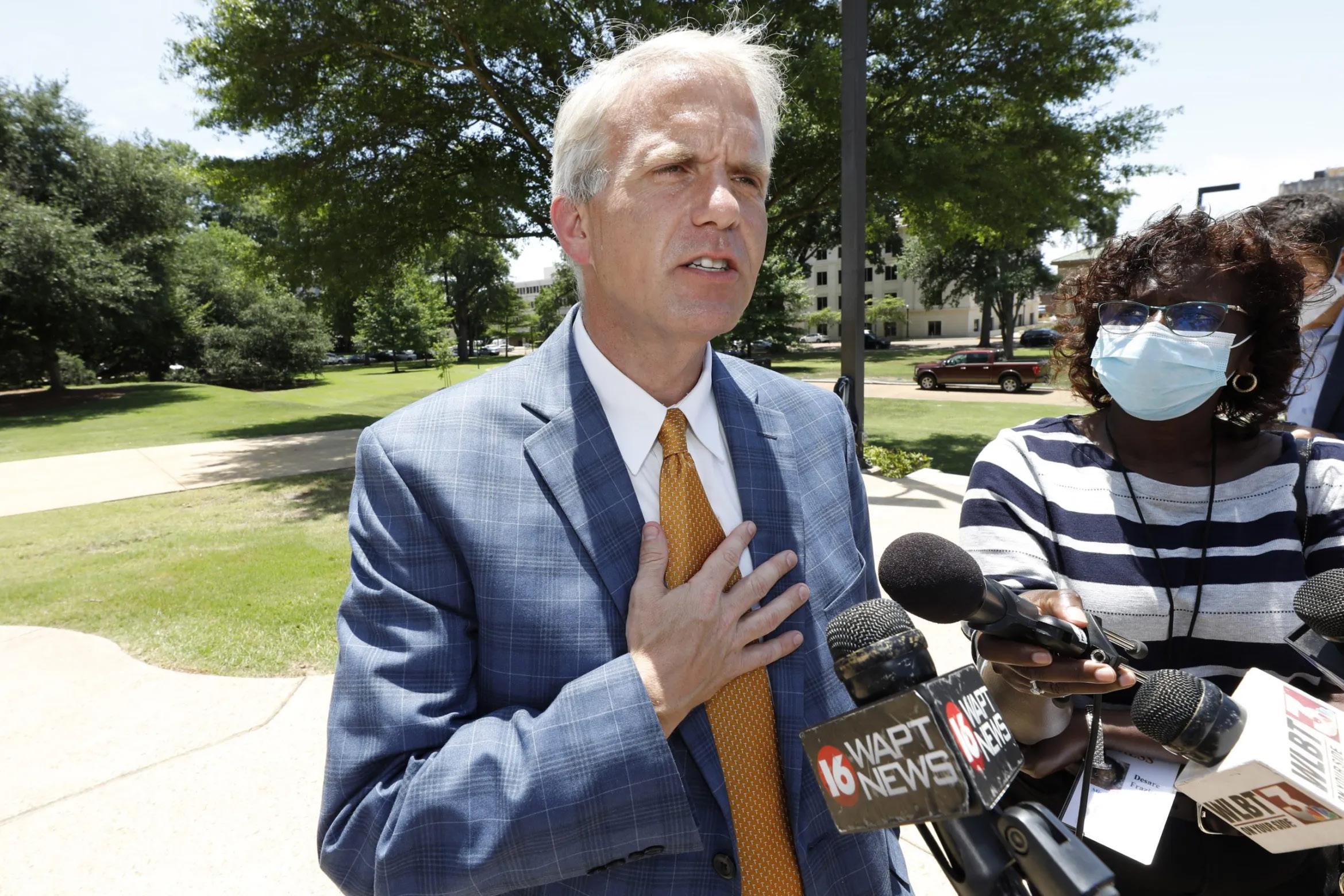
Presley is a skilled retail politician. His modest background sticks out––Presley’s opponent, Tate Reeves, received a $115,000 donation from his businessman father when he first ran for public office. Presley has a knack for speaking to people about the issues affecting their everyday lives. When he won a rebate for Mississippi residents who had been overcharged by an energy company, he made a whistle-stop tour of northern Mississippi, posing with an oversized, $80 check made out to “Mississippi Customers.” He has been known to perform old Elvis ballads; his favorites are “Suspicious Minds” and “Can’t Help Falling in Love.”
Over the last fifteen years, Presley has used his position on the Public Service Commission to wage a populist crusade on behalf of consumers. He has gone after what he perceived to be wasteful spending
on untested “clean-coal” technology, made it easier for small local firms to compete for state contracts, and fought for rural broadband, comparing the fight for expanded internet service to FDR’s effort to electrify the South in the 1930s and 40s.
“This is the electricity of the 21st century, make no mistake about it. Not having a connection to high-speed internet service is holding many of our people back,” Presley said in a 2020 speech. Similar sentiments feature in his stump speech today. If Democrats had their way, the election would be fought on economic development, health care, and corruption. Infrastructure pitches, like Brandon Presley’s message on broadband, would be center-stage, and social issues would be avoided altogether.
At the core of Democrats’ perceived advantage on issues like economic development, infrastructure, and health care is the fact that Mississippi ranks dead last nationally in many indicators of social and economic well-being. While some statistics have improved over the last ten years, notably in K-12 education, the state is still at or near the bottom in many categories. Mississippi has the lowest life expectancy at birth in the United States, the lowest GDP per capita, and the third-lowest adult literacy rates.
Democrats like Representative Thompson see these unfortunate facts as an opportunity for Democrats, not just in Mississippi but across the South.
“Our Republican leadership works hard at keeping us 50th in the nation, and that’s just so unfortunate,” Thompson said. “We can’t even fully fund public schools in this state.”
Democrats hope to use these numbers to craft a larger narrative of Republican leadership failing Mississippi. They want Mississippians to connect Republican leadership, allegations of corruption, and the fact that the state lags the nation
in many measures of socio-economic well-being.
While the political implications of corruption are unclear, the scale and details of the scandal in question, known as the TANF scandal, are astonishing.
Under the Temporary Assistance for Needy Families (TANF) welfare program, states receive money in lump sums for poverty alleviation, but they have broad discretion over how to use the funds.
In 2020, reporting by Mississippi Today and the Mississippi Free Press revealed massive corruption in the administration of Mississippi’s TANF program. According to State Auditor Shad White, between 2016 and 2020, nearly 80 million dollars of TANF funding was misused. One especially controversial example involved funds sent to Brett Favre, Mississippi native and former Green Bay Packers quarterback. The state used 1.1 million dollars of TANF funds to pay Brett Favre for public appearances. Favre has not been charged with any criminal wrongdoing, and maintains that he did not know the money was allocated for poverty reduction.
Further investigation revealed that hundreds of thousands of dollars in TANF funds also went to former pro-wrestler Brett DiBiase, who was paid to run classes
“Our Republican leadership works hard at keeping us 50th in the nation, and that’s just so unfortunate,” Thompson said.
“We can’t even fully fund public schools in this state.”
on substance abuse prevention that he never actually taught. DiBiase has plead guilty to one count of “Conspiracy to Defraud the United States.”
The DiBiase and Favre cases account for just a small fraction of the nearly 80 million dollars siphoned away from Mississippi’s poorest residents. Entities of all kinds received welfare funds, though many groups and individuals who received these funds were unaware of their origins. Others known to have received money earmarked for welfare run the gamut from out-of-state drug companies looking to invest in Mississippi to charter-school operators and athletic programs at Mississippi universities.
Democrats think highlighting the TANF scandal is a winning strategy.
“It’s just stunning what is hap-
residents, both Black and white. But the money never got to the individuals it was intended to,” he continued.
But those outside the Democratic ecosystem are less certain that the TANF scandal will be a major factor in this fall’s election. Professor Mikell argues that the misuse of TANF funds is an issue with the potential to help Democrats, but he is still dubious.
“The TANF stuff is a scandal and a half, but I’m not sure how much awareness the everyday Mississippian has of it,” Mikell said. “You could do quite the negative ad, but does he have enough money to get the word out?”
Even if Democrats were to marshal the resources necessary to spread their message on corruption, Corder of the Magnolia Tribune is not convinced voters will
pening over in Mississippi,” said Senator Jones. “I think people are beginning to see now that there are other opportunities, and their state government makes a difference.”
Representative Bennie Thompson also believes the TANF scandal will provide a big boost to Democrats. “Wealthy football players and others have taken TANF dollars as their own personal piggy bank, and built volleyball courts,” he said.
“Now people are saying, wait, all of these people are Republicans who are taking this money. The beneficiaries might have been low- and moderate-income
care. He noted a recent poll where only 9% of GOP voters and 8% of Democrats cited public corruption as their top issue in the gubernatorial election.
“Voters really aren’t seeing that as a top issue in this election cycle,” Corder explained.
Another issue Democrats hope will break in their favor is the governor’s refusal to expand Medicaid. Polling in Mississippi has shown consistent support among both major parties for Medicaid expansion, which would increase the number of low-income residents eligible for free health coverage. Although some
“People are going to rise up and say, ‘enough is thank God for Mississippi. We want to move this that’s responsive to people… We want the funds poorest state in the country.
Republican leaders in the state have expressed openness to it in the past, Governor Reeves is strongly opposed.
Democrats believe issues like health care and corruption will allow them to define this race outside of the racial prism that has long shaped partisan politics in
the last four years.
Frank Corder argues that Medicaid expansion is popular among Republicans in theory, but cites polling data that shows its strength as an issue plummets when framed around costs and economic interests.
change,’” Jones said.
It is unclear whether Brandon Presley can pull off a victory in Mississippi this fall. But to dismiss his campaign—even if he were to lose—would be a mistake. That he is running a competitive race in Mississippi at all is a testament to the fact that
Mississippi.
“While race has always been the litmus test for a lot of elections in our state, what we have now are some issues that transcend race,” Rep. Thompson explained. “Our governor refuses to take the Medicaid expansion dollars that are available. And so we’re having hospitals closing, and we’re having health centers closing, and you find those closings in communities that are both predominantly black and predominantly white. So it’s no longer perceived as a one race issue. It’s a Mississippi issue.”
Again, observers outside the Democratic Party are less sure. Professor Mikell agrees that Medicaid expansion is popular in the state and beneficial for Democrats, but notes that it was also a big issue in the 2019 governor’s race, and did not swing the race against Reeves then. On the Medicaid expansion front, Mikell points out, nothing fundamental has changed over
“It depends on how you phrase the question,” Corder explains. “If you actually ask the question from a monetary standpoint,” he continues, “that support of it goes significantly down.”
Mississippi Democrats believe the race is about more than just economic issues, health care, or corruption. It’s about a broader frustration with the state lagging behind the rest of the country. Democrats believe they can tap into a feeling that their state is underachieving. Former Senator Doug Jones, from neighboring Alabama, articulated this general feeling most forcefully.
“People are going to rise up and say, ‘enough is enough. We’re tired of folks in Alabama saying thank God for Mississippi. We want to move this state forward. And we want a government that’s responsive to people… We want the funds to go where they [belong] in a state that is the poorest state in the country. We’re ready for
there is some truth to Senator Jones’ criticisms of the status quo.
The 2023 Mississippi gubernatorial election could mark the beginning of a new era of reform spearheaded by Democrats across the South, one to rival that led by the “New South” governors of the 1960s and 70s. Or the outcome in November could prove Republicans correct in contending that Mississippi is already in an era of reform under GOP leadership, in which educational outcomes are improving and wages are increasing. It is too soon to tell. But what is certain is that this fall’s election is one battle in a broader war being fought across the South between competing visions for the region. For those invested in the future of the American South, the governor’s race in Mississippi is the one to watch.
is enough. We’re tired of folks in Alabama saying this state forward. And we want a government funds to go where they [belong] in a state that is the country. We’re ready for change,’”

James “Jimmy” Hatch is a former special operations
Navy SEAL senior chief, fighter in 150 missions (Iraq, Afghanistan, Bosnia, Africa), master naval parachutist, and expert military dog trainer and handler. He served in the military for almost twentysix years until a gunshot shattered his femur during a mission in Afghanistan and took him out of the field. After struggling with depression and substance abuse in his post-service life, Hatch reflects on his experiences in his book, Touching the Dragon: And Other Techniques for Surviving Life’s Wars. He joined the Eli Whitney student program at Yale in 2019 and will graduate this year as a Humanities major.
TELL US A LITTLE BIT ABOUT YOURSELF AND YOUR LIFE LEADING UP TO YOUR SERVICE AS A NAVY SEAL. WHY DID YOU WANT TO BE A NAVY SEAL?
I was adopted a couple of times, and I never met my birth family in Utah. At the time of my second adoption I was around 3 years old, and it was pretty brutal, violent — cops would come to the house and stuff. I was accustomed to violence and wasn’t very comfortable trusting people. So I’m naturally drawn to stories about war and that type of environment because, to me, relationships are transactional. I just figured that’s how the world was. [When I was younger] I got into a lot of trouble. I was a criminal. I broke into places, snuck around, vandalism, stuff like that. So, the military was actually kind of hard for me to get into because I
was almost in enough trouble that I couldn’t be let in. I was lucky to be accepted, and then I did regular [military] stuff for a while until SEAL training. The reason I wanted to be a SEAL, or in that type of work, was because I wanted to be the guy that punished people. I wanted that level of violence because of the things that had occurred when I was a child. I had a very strong desire to punish people that hurt innocent people. Initially, when I went to SEAL training, I quit. I was scared to death, and I didn’t have a lot of self confidence. The biggest guy in that class quit. He’d done the Iron Man, and I realized that it wasn’t really about fitness. It’s really about how well you can suffer. Anyway, I went back to BUDDS –the second SEAL training is called BUDDS. Later, I tried out for what’s called the Naval Special Warfare Development Group, that’s a
nice name for SEAL Team Six. I got to do some pretty heavy duty stuff and in lots of places. I was shocked. I think the first time that I saw what humans are capable of doing to each other on a big scale was when I saw the mass graves of predominantly Muslims in Bosnia. There were kids and women buried everywhere, it was tough.
I had my own prejudices and intellectual limitations insofar as I thought, if you lived in a city like this — with big buildings, universities, ballets, and opera — this couldn’t happen. Bosnia was highly cultured, they had hosted the Olympics in Sarajevo in 1984. In spite of all this, there was still violence.
WHAT WAS YOUR ROLE ON YOUR TOURS?
We were mostly doing what’s called capture-kill missions. We would find the leaders of different groups and go to their house, and they made the choice between being captured or killed. We showed up and would try to give them an opportunity to give up. More often than not, they wouldn’t take it.
I remember this one guy who used his family as a human shield. [His kids] were down the hall, and [him and his men] were shooting at us from this back room. He didn’t kill his kids, thank God. But when we got to the back of the house, I asked him, “why did you have your kids there?” He said, in perfect English, “I will not let my family get in the way of jihad.” I thought to myself, how do you deal with that?
HAVING DONE ALL THESE MISSIONS, DO YOU BECOME DESENSITIZED TO FEAR? YOU SAID EARLIER THAT SEALS HAVE TO BE ABLE TO SUFFER, BUT ALSO YOU HAVE TO BE BRAVE AND PUT YOURSELF IN INTENSE DANGER. DID YOU STILL FEEL THE SAME ADRENALINE RUSH OR NERVES WITH EVERY MISSION?
After the selection and training that you go through, it’s pretty much guaranteed that everybody that’s in your crew really wants to get out there and fight. The biggest fear you have isn’t that you’re going to get hurt or killed. It’s that you will make a mistake, and then let one of your friends down and then they will get hurt. So, the fear wasn’t really personal. It was more of a collec-
tive fear. I can speak only for myself here, but it was evident that my buddies were of similar minds.
THE RELATIONSHIP BETWEEN THE PEOPLE ON THESE MISSIONS MUST BE VERY UNIQUE. ARE YOU A MENTOR TO SEALS — WHETHER FORMER OR CURRENT — NOW? WHAT ADVICE DO YOU GIVE PEOPLE WHO ARE ENTERING OR ALREADY SERVING IN THE MILITARY?
I think my book, ‘Touching the Dragon: And Other Techniques for Surviving Life’s Wars,’ opened up a lot of doors to help people. I’ve given speeches to veterans’ groups, people in active duty, law enforcement organizations, and more.
When people who have been through this type of training hear me admit that I struggled, they feel like they have permission to admit that they struggle too. In the military, one thing you don’t want is your colleagues to think you’re f***ed up. But the truth is, we’re all f***ed up. We just hide it better than others sometimes, and processing those things is important.
WHEN YOU CAME BACK FROM A MISSION, WAS THERE A MOMENT OF REFLECTION ON WHAT WOULD HAPPEN WITH YOUR TEAM. IN OTHER WORDS, WOULD YOU TALK ABOUT THE DIFFICULT THINGS YOU SAW OR ENDURED AFTERWARDS?
After a mission, we would do something called an after-action debrief. We’d all get together and go through the whole mission in an official way, but we didn’t talk about the emotions. For example, one night we went on a mission, and there was a young boy who was around ten years old, two women, and then these five or six guys [who had been involved in shooting and were the target of the mission]. These guys had been raping this boy. A lot of us who had been involved in that type of thing as children ourselves, we wanted to just kill this guy. But that’s murder. So we called back to our base and said hey, we got this boy. But, there are no Child Protective Services in Iraq. The social structures are really messy there. We were directed to have our medics take care of the kid and talk to the women to make sure that they would
“When people who have been through this type of training hear me admit that I struggled, they feel like they have permission to admit that they struggle too.”
take care of him.
So anyway, when we came back, we debriefed that mission, but we didn’t sit and talk about the feelings that we had about that kid. There were always those types of situations.
I had this illusion that war is an equal transaction with combatants, right? There’s the bad guy and the good guy. We fight. You try to kill me, and I try to kill you. But actually, that’s not the case. This boy is an example of that. That was 2006. What do you think [that boy] is doing now?
AT YALE, YOU’RE A HUMANITIES MAJOR. WHAT DREW YOU TO STUDYING LITERATURE, ART, AND CULTURE? DO THE BOOKS YOU READ HELP YOU OVERCOME THINGS YOU ARE STRUGGLING WITH? DO YOU SEE YOURSELF REFLECTED IN THEM AT ALL?
So you know, I dropped out of high school. I never took an SAT or an ACT. I didn’t read what I was supposed to read in school. I didn’t like it. I barely had enough credits to take the GED and get my diploma.
While I was in the military, I would look at people I respected, and then I would look at what they were reading. So, I kinda got turned on to some of the classics like Marcus Aurelius and Epictetus – so stoics. It made sense for the military.
I understood that those things were important, but I didn’t
really have the capacity to read them and grasp what was going on. I got frustrated with it, but I kept trying. Then I got here and talked to Professor Norma Thompson. She was the director of undergraduate studies for the Humanities, and she suggested I do Directed Studies. And I’m like, I don’t know s*** about academia, and I didn’t know what DS was. I was told it was hard, but if no one is shooting at you, how can it be that hard? It was f***ing hard, and I had a really hard time keeping up.
DS also hit me because I’m reading this stuff and feeling it. First I’m pissed off, like dactylic hexameter, what’s that? Then we started reading about things [like epics] that were about war, and it hit me hard. I was in tears. I couldn’t sleep. Seriously, when we were reading Locke, Hobbes, and Rousseau and thinking about “what is the origin of man,” and I’ll tell you what the origin is, f***ing savages.
I’m thinking of the towns in Iraq. Once, we went into a storage building looking for the bad guys, and there was somebody chained to the f***ing floor. Or they’re out there naked. It’s cold. They have a bucket on the floor with water and under one of them – the bathroom is all over. It kind of disappoints me that we have running water and Siri, and we’re still just a few consecutively missed meals away from being complete savages. There’s just not a lot of people like me that have the level of exposure to that kind of stuff in academia. I don’t know exactly how to move forward with it, but I will.


“I find hope in my classmates— or when I open my email, and there’s somebody at a hospital doing something meaningful. There are days when I’m in tears as I walk past Cross Campus.”
YOU HAVE BEEN EXPOSED TO SO MANY DIFFERENT TRAGEDIES. ARE THERE EXAMPLES WITHIN LITERATURE THAT COME CLOSE TO DESCRIBING YOUR EXPERIENCES?
Picks up ‘Paradise Lost’ and points to the book. That’s how I felt after I got hurt. I’m reading these things, and I think wow these describe my feelings. Sometimes when you go on a mission, you have to jump out of an airplane and you HAHO, a high altitude high opening jump, and it’s f***ing awesome. It’s a great way to sneak in on a target. It’s also beautiful. When you jump out of the back of the airplane in the middle of the night, you are immediately aware of your insignificance. You are just this little speck in the sky. And that same sensation can get when you are way out in the ocean. So in ‘Paradise Lost’ it says: “Before their eyes in sudden view appear/ The secrets of the hoary deep, a dark/ Illimitable Ocean without bound,/ Without dimension, where length, breadth, and heighth/ And time and place are lost…” That’s what HAHO feels like to me.
IN YOUR BOOK, YOU DESCRIBE FINDING INTENSITY AND PEACE IN GUNFIGHTS. COULD YOU PLEASE DESCRIBE THAT? WHERE ARE OTHER PLACES YOU HAVE FOUND PEACE?
You talked about the intensity of the gunfights and you know, I have actually found that level of intensity in a few of my classes here. The problem with that intensity in gunfights is you’re destroying humans or you’re getting destroyed. And in this environment, at school, I feel like I’m building humans. Most importantly, I’m building my humanity, which is a very interesting and intense and emotional feeling that I don’t know how to really express except to say that I am f***ing lucky because a lot of people with experiences I have had don’t ever get to see or feel that.
In western Iraq, we would take helicopters and land way way way, you know, 678 kilometers out here in the desert, walking, sneaking out as quickly as we could surround the house. So it’s a team effort, right? In the classroom, it’s the same way. Professor Bromwich, for example, guides the class with questions that leave you with more questions than you can actually even try to answer. That synthesis is not that different from a direct action mission. I mean, really, you’re on a mission to try to understand what the writer wants to communicate and then even further.
YOU ALSO HAVE TO GRAPPLE WITH THE FACT THAT YOU ARE KILLING SOMEONE, AND THAT MUST COME WITH COMPLEX EMOTIONS. HOW DID YOU DEAL WITH THE ETHICS OF YOUR JOB?
When you go out and commit that type of act of inhumanity, that does something to your soul. The other people that are involved in the war, the

people who sent you, they aren’t as invested. They don’t care as much as you do, even though they’re the ones that sent you. When I realized that the level of commitment that we had was not shared by senior leadership people, it got very difficult for me.
Having moved away from that environment, it became a lot easier to see things in a different light. I came to Yale and took this class on Afghanistan where we had all these generals and ambassadors come talk to us. I was so shocked. Ambassador [Anne] Patterson was the U.S. ambassador to Pakistan when I got shot. She came to speak to us — what an amazing human being. And she told me right away, you’re not going to get what you want. I said, what do you mean? She said, you want somebody to blame. Everybody is to blame.
So when I think about the risks that people took on both sides, and the people who have died on both sides. It’s just so sad. And the really difficult part for me is that none of those leaders who made those decisions are ever held accountable.
YOU WENT FROM A WAR ENVIRONMENT TO GOING HOME AND BEING SURROUNDED BY PEOPLE IN THEIR REGULAR LIVES. I KNOW THAT YOU HAVE STRUGGLED WITH MENTAL ILLNESS IN YOUR POST-SERVICE LIFE. HOW DID YOU EMERGE FROM THOSE FEELINGS OF ISOLATION?
What we were doing was so intense. We would go out on a mission, capture-kill, and come back. I remember one time after a lone survivor shift where we had picked up all these bodies, and I got off the plane and within a few hours of that I’m standing in a f***ing Best Buy, looking at the TVs they are selling. There were all these people around me in the store who didn’t have to worry about what’s going on in other parts of the world. No one really cares, and I still haven’t worked that out.
I think the hardest thing for me is not what happened to me — it’s what I did to other people who didn’t deserve it. In war, where there are combatants using their families as shields — that’s what gets you, when you see a child die.
WHERE DO YOU FEEL LIKE YOU FIND HOPE?
I find hope in my classmates — or when I open my email, and there’s somebody at a hospital doing something meaningful. There are days when I’m in tears as I walk past Cross Campus.
This little spot on the planet — so much good stuff comes out of here.I know we can joke about it because we’re part of it, but as a person who has lived a lot of life and come from different angles, this place is f***ing amazing. It really is. The fact that I get to be a part of it with people like you guys, it’s a lot of hope.
This interview has been condensed and edited for length and clarity.
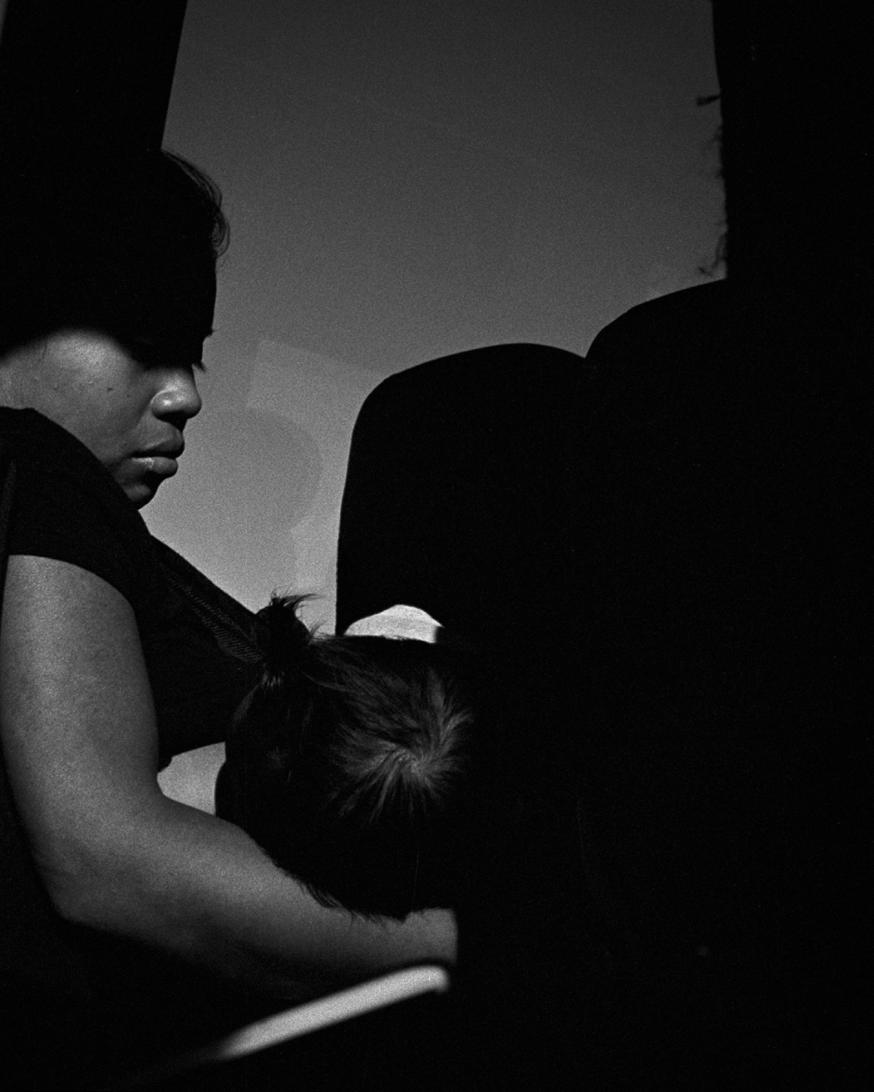


In January of 2019, at the height of the migrant caravan crisis, I took a Greyhound bus from Los Angeles to New York City along the southern route. During my transfer in El Paso, I encountered a group of Salvadorans—almost exclusively single parents and young children—who had recently crossed the border. They had been granted temporary asylum with court dates set for later that year to gain permanent stay. Their status depended upon having family in the U.S., however distant. I stayed on the bus all the way to New York, watching as passengers transferred in Texas, Arkansas, Tennessee, Pennsylvania. Only a father and son accompanied me to the final stop.
